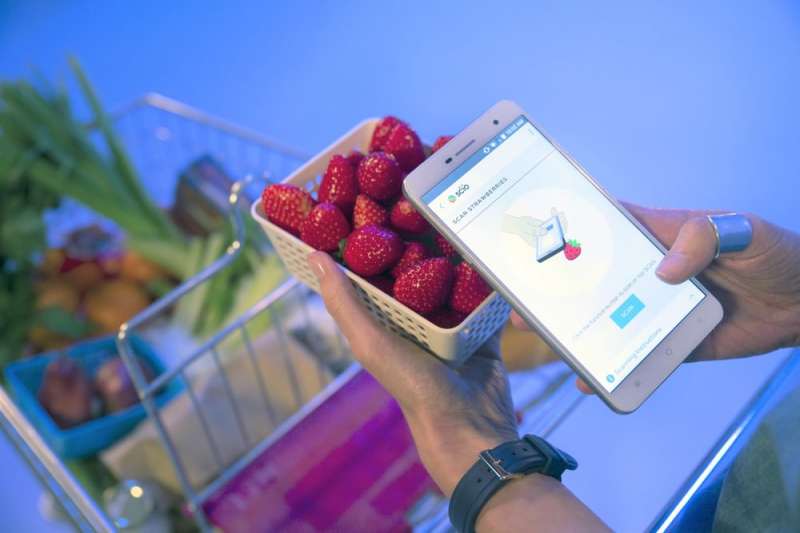January 8, 2017 weblog
Which strawberry do I eat? Ask your smartphone

(Tech Xplore)—Just when you were getting bored with all the gee-whiz marketing claims of smartphones comes an eye-grabbing feature likely to stir some curiosity.
Say hello to a material sensing smartphone using SCiO by Consumer Physics. It's a miniaturized near-infrared spectrometer, which detects the molecular signature of things, said The Verge.
R. Colin Johnson, advanced technology editor, EE Times, listed the key players in this device.
"The key component is a tiny near-infrared spectrometer which is made by Analog Devices Inc. (Norwood, Mass.), designed by Consumer Physics Inc. (Tel-Aviv, Israel)," and this has been integrated into a phone by Sichuan Changhong Electric Co. (China).
What exactly can the phone do? The range includes scanning the sweetness of fruits you want to buy or use, to biometrics from your biceps, to verifying product authenticity such as pills and warn you if something is not right (e.g., "medication not recognized").
You can find the sensor in the smartphone, Changhong H2. The phone, in other words, has the material sensor, which can scan and analyze physical objects.
"We used technologies developed for cell-phone cameras and optical communications devices to dramatically reduce the cost and size of NIR spectroscopy systems," said the team on the Consumer Physics site.
The Consumer Physics team also said, "Spectrometers used for near-IR spectroscopy are normally found in scientific laboratories and are very big and expensive. Designed for consumers, SCiO leverages a tiny spectrometer, designed from the ground up to be mass-produced at low cost. Consumer Physics achieved this advancement by reinventing the spectrometer around low-cost optics and advanced signal processing algorithms."
The Verge's Paul Miller offered a discussion of how this all works.
"The sensor works by bouncing infrared off an object and registering the unique molecular fingerprint that bounces back."
According to the team behind it, "SCiO is based on the proven near-IR spectroscopy method. The physical basis for this material analysis method is that each type of molecule vibrates in its own unique way, and these vibrations interact with light to create a unique optical signature."
SCiO includes a light source that illuminates the sample and an optical sensor, spectrometer, that collects the light reflected from the sample. "The spectrometer breaks down the light to its spectrum, which includes all the information required to detect the result of this interaction between the illuminated light and the molecules in the sample," according to Consumer Physics.
SCiO communicates the spectrum of the sample to a smartphone wirelessly, the team added, which forwards it to a cloud-based service for review. Advanced algorithms use an updatable database to analyze the spectrum and deliver information about the sample back to the phone.
Developers could find interesting possibilities as a tool for different apps. Miller said, "developers can create different use cases by training it on a bunch of samples. "
Miller tried out one app, designed to measure sugar content in fruit via scanning. He reported that "the sensor correctly pointed me to the sweetest strawberry in a dodgy bunch."
The phone itself has a 6-inch screen and 2-GHz, 8-core application processor, said EE Times.
Reports said it will be first rolled out in China and it will be headed to the US later on.
Consumer Physics CEO Dror Sharon told EE Times "Its does not replace a laboratory spectrometer—for instance, its signal cannot penetrate deep inside objects—and its results resolve down to thousands of parts, rather than millions or billions, but that is enough for most consumer purposes."
More information: www.phone.consumerphysics.com/
© 2017 Tech Xplore



















